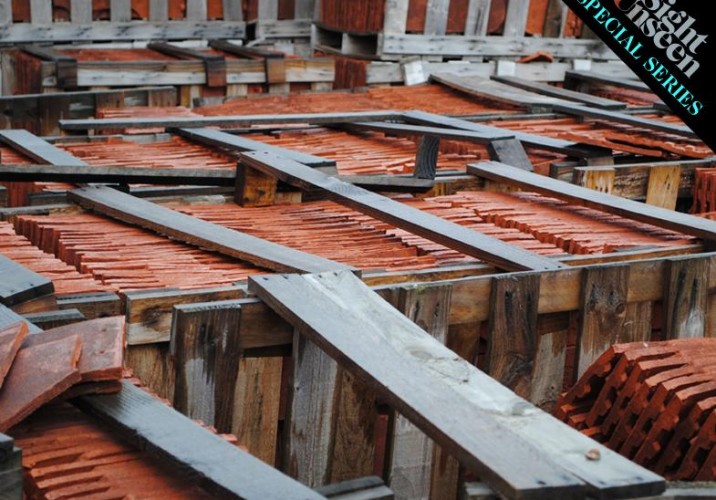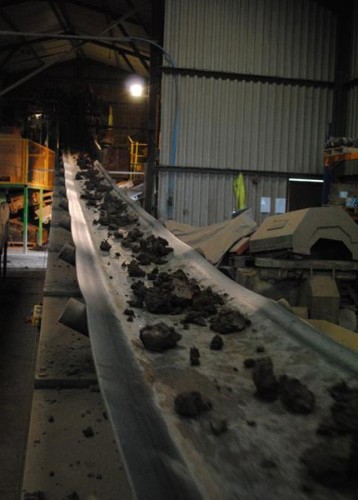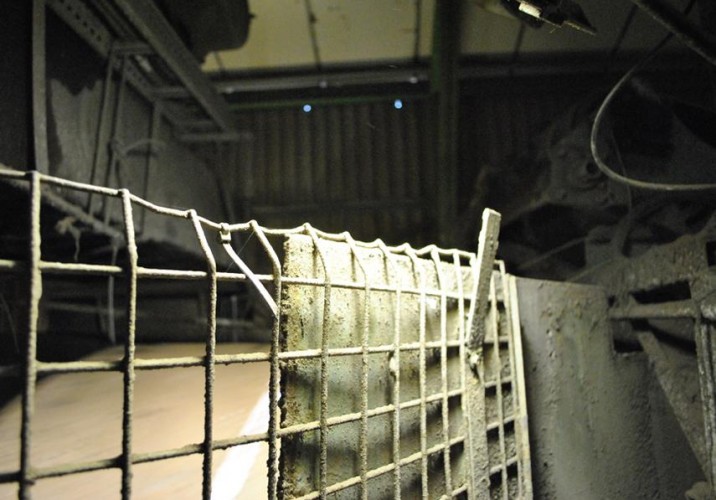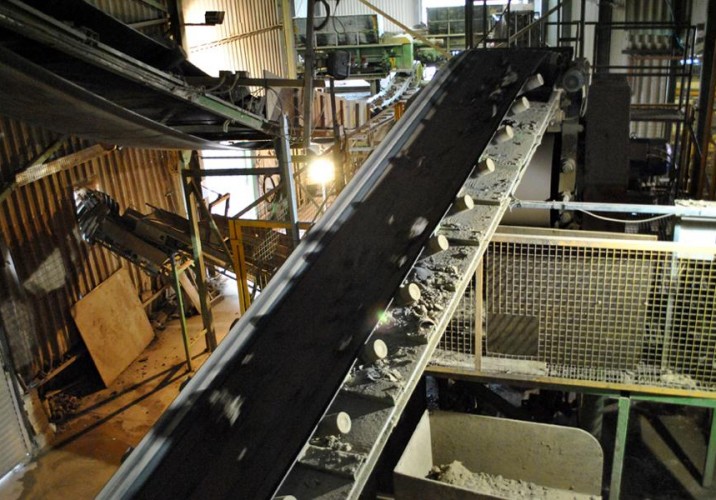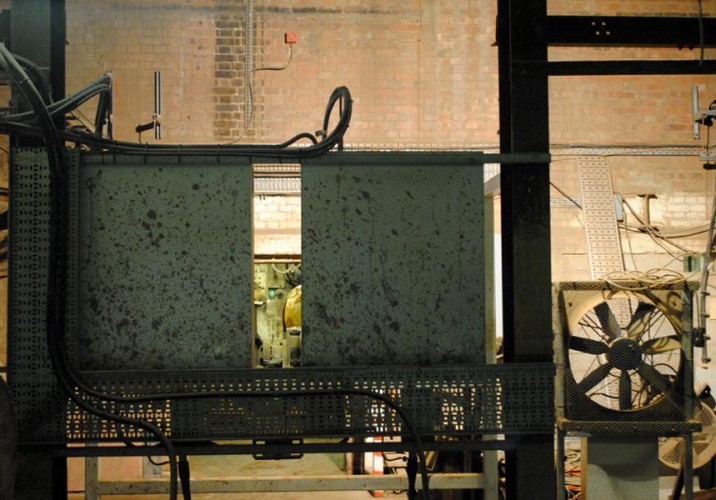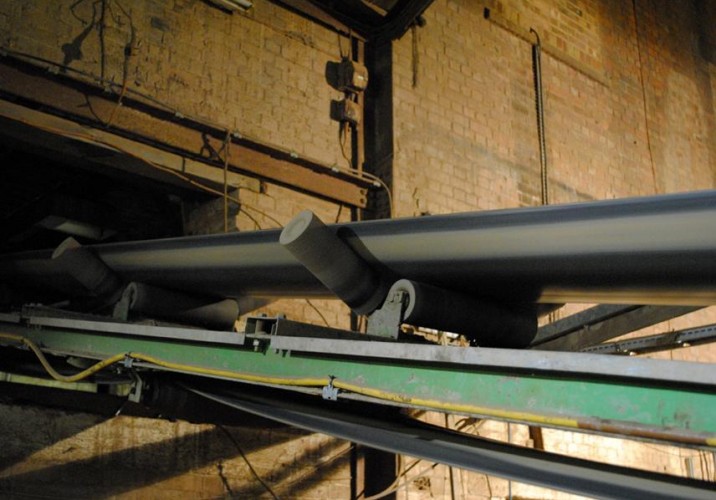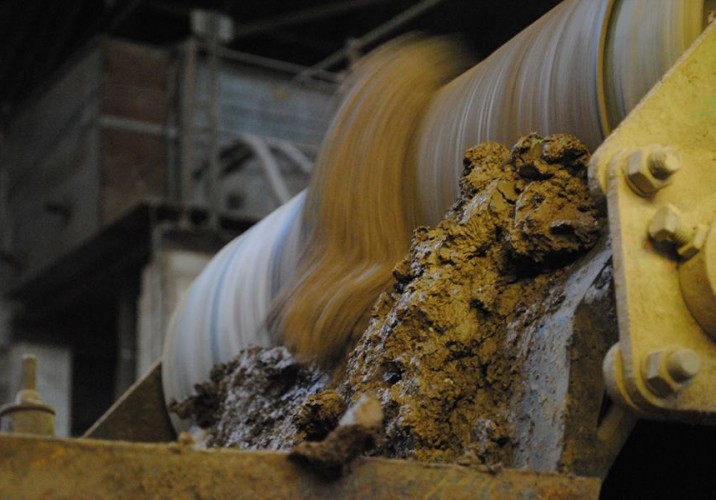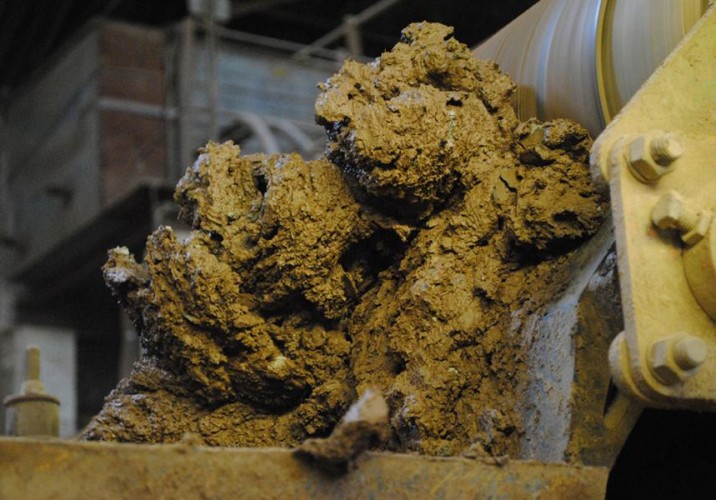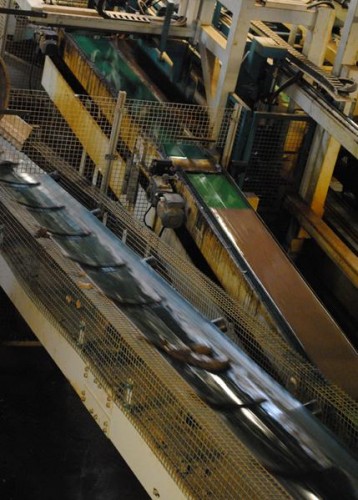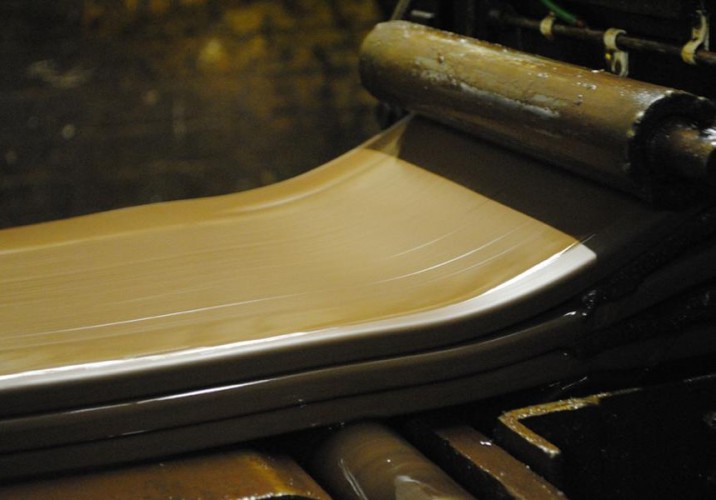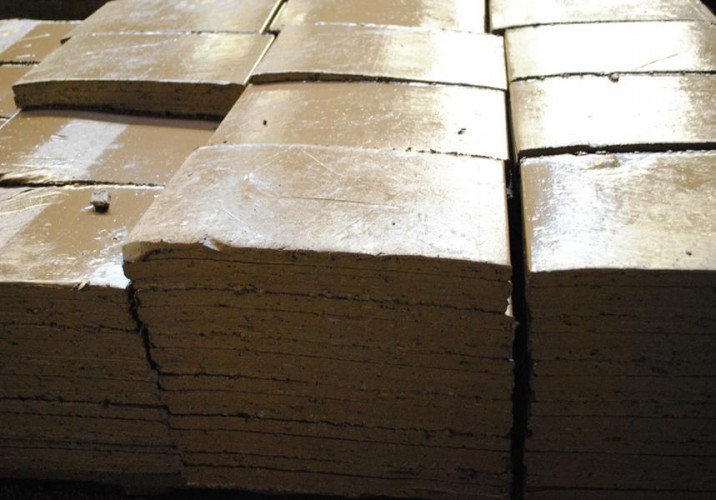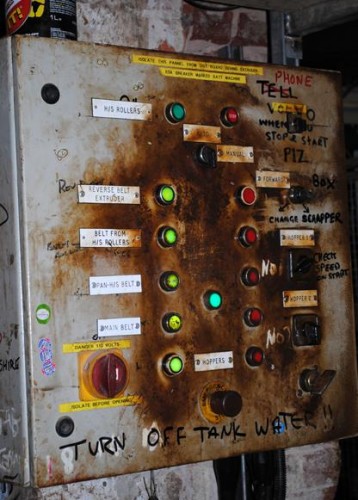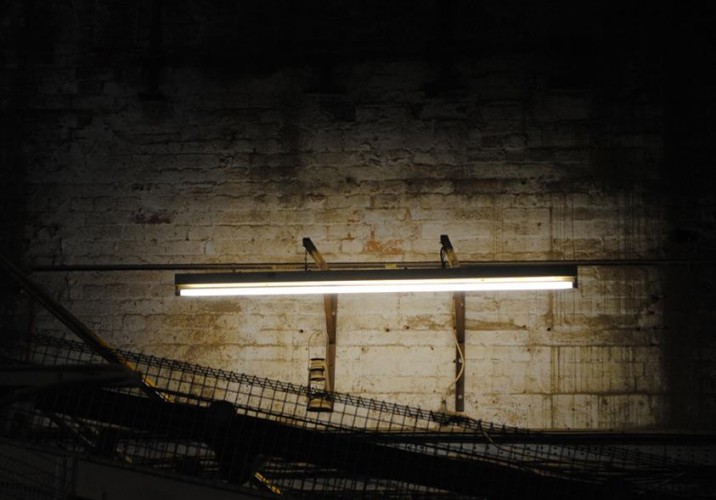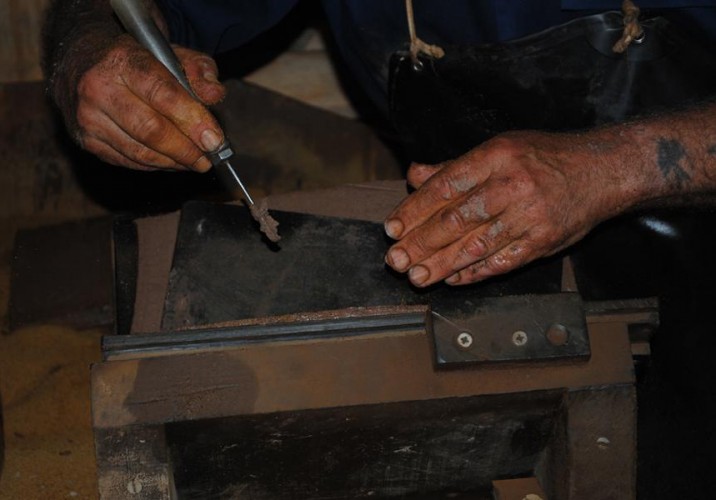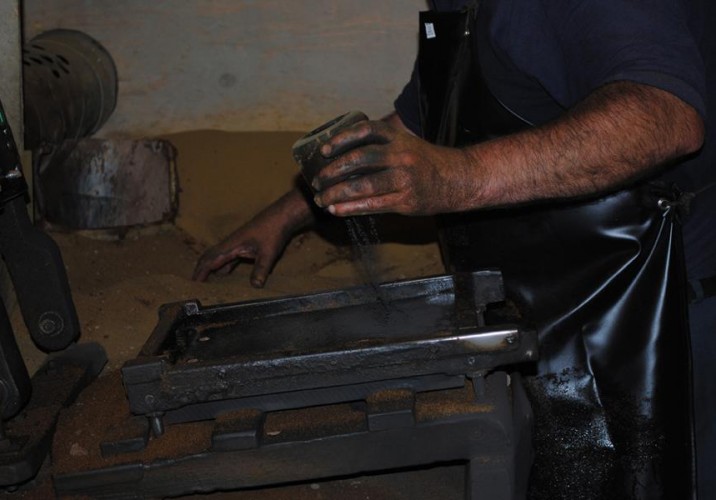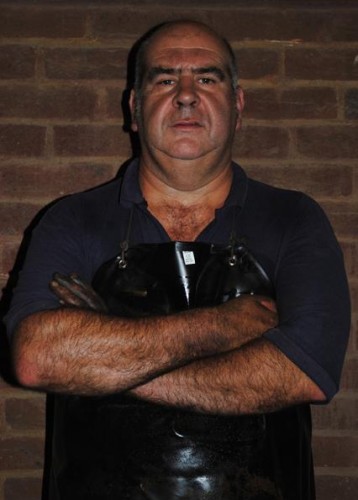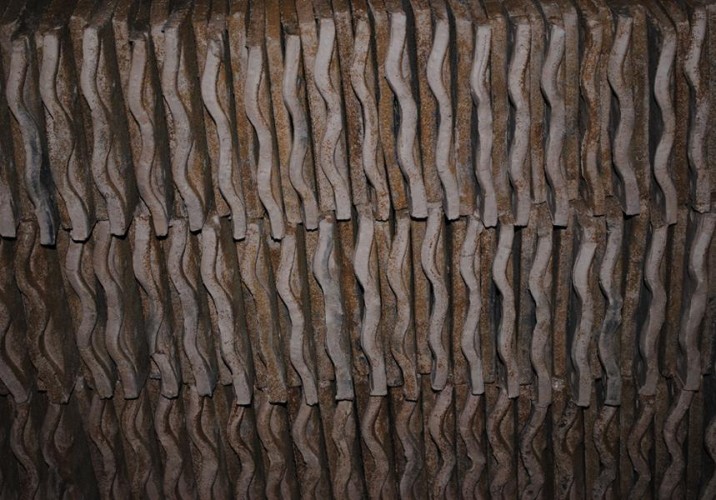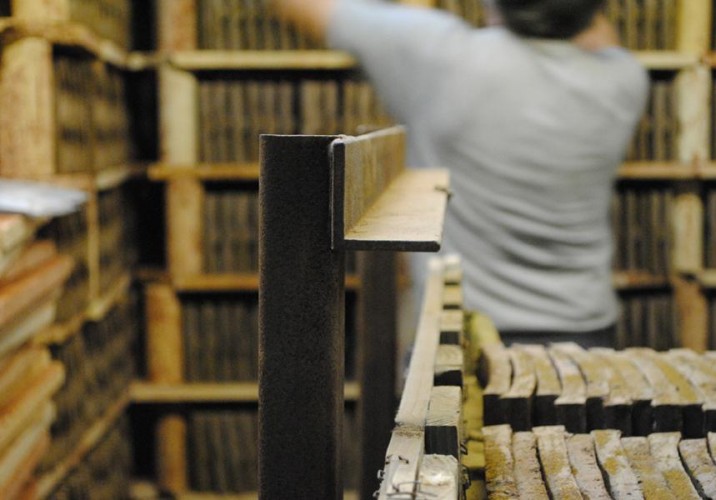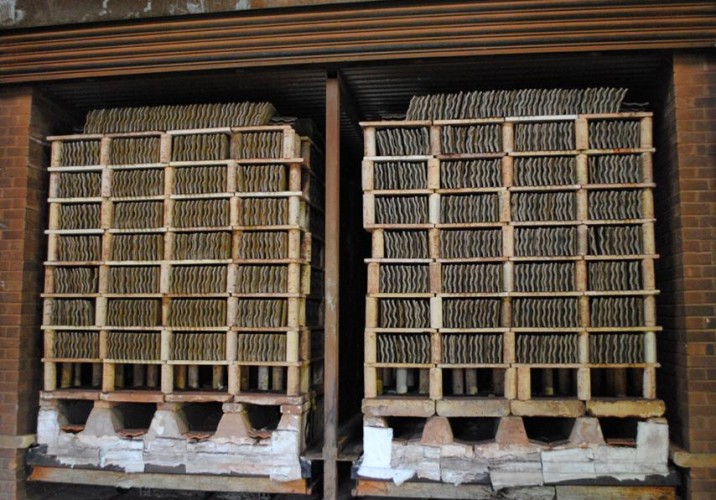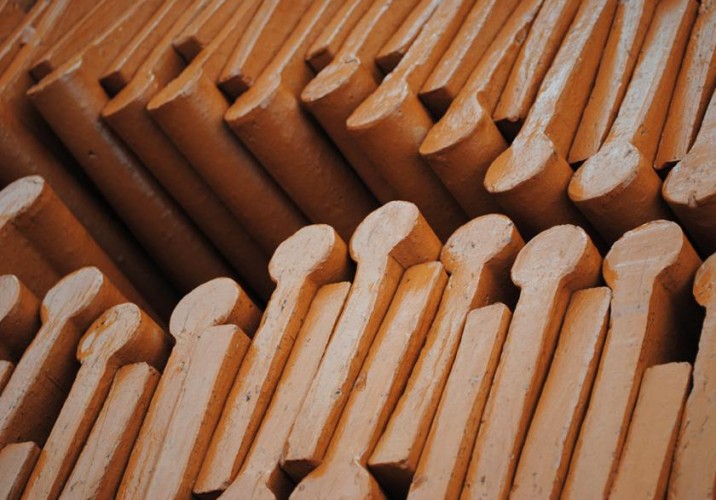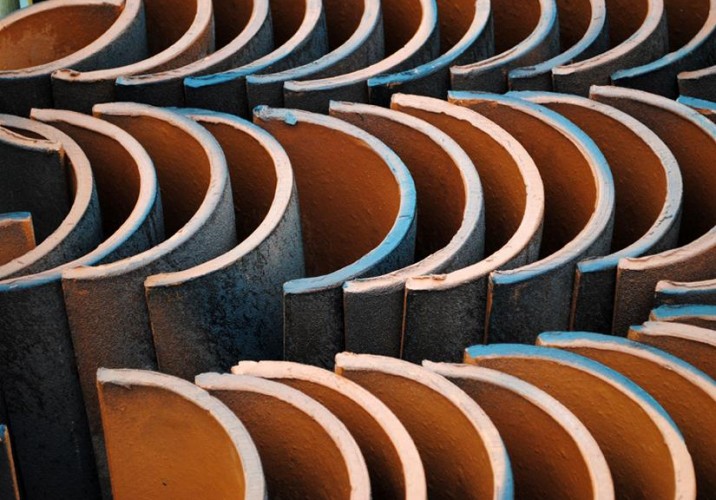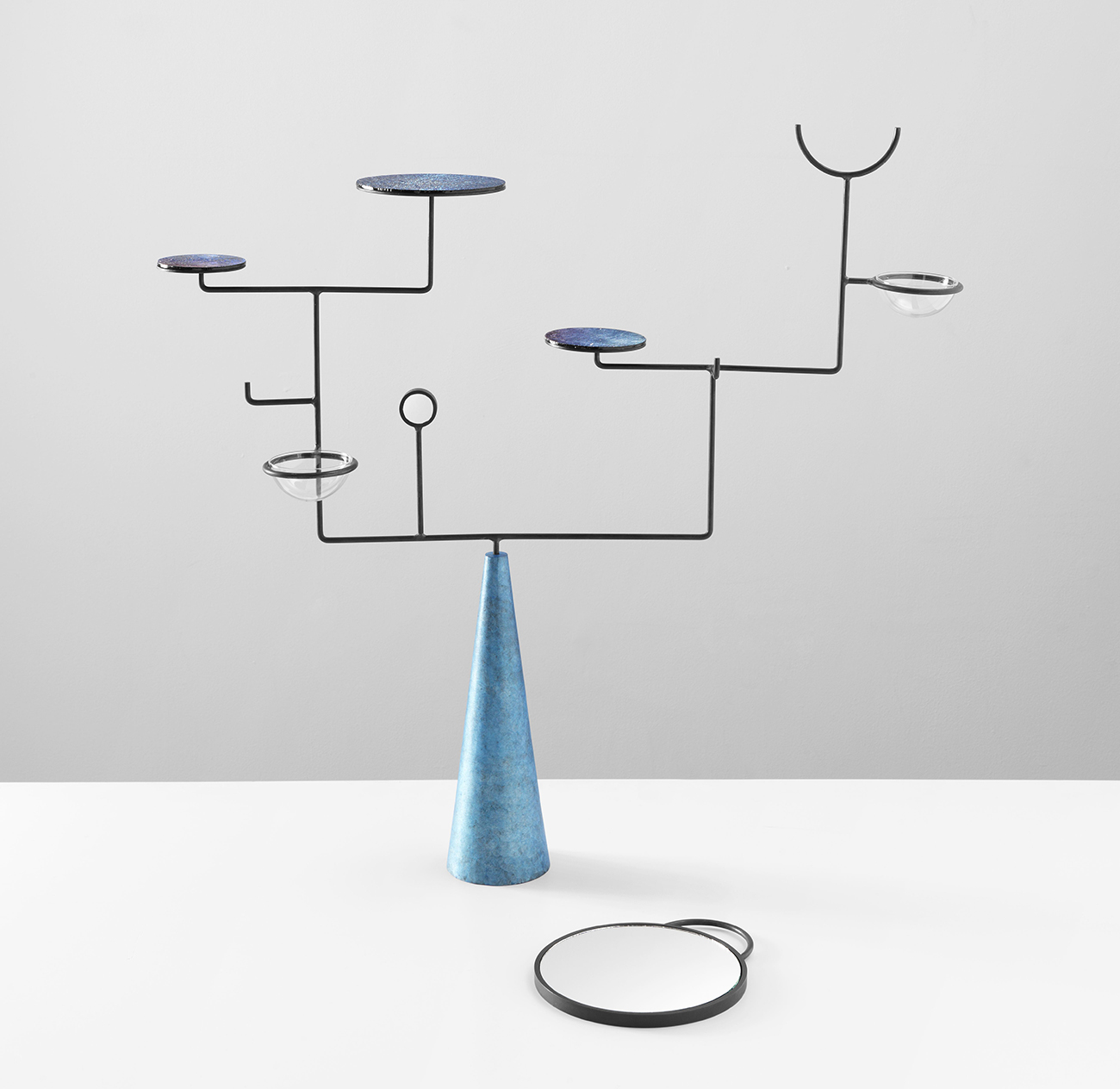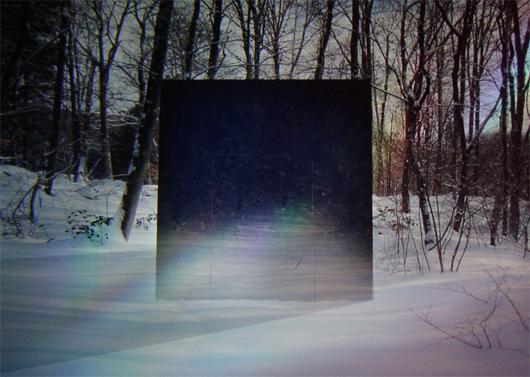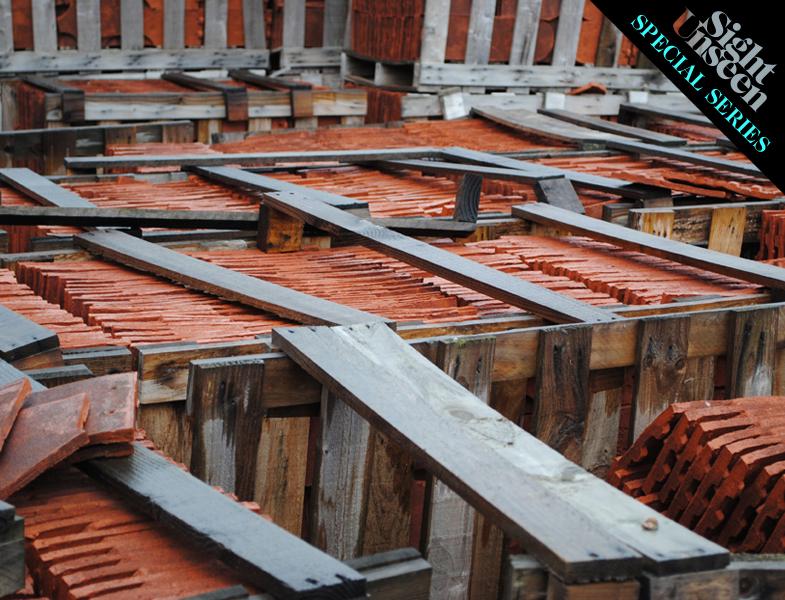
11.28.11
The Making of
Carly Mayer: The Roof Tile
Despite being a trained sculptor, or possibly because of it, British artist Carly Mayer didn’t have to reach very far for a metaphor to describe the experience of visiting one of the factories peppered throughout Sussex, England, for the first time: “It reminded me a lot of Ai Weiwei’s ‘Sunflower Seeds,’” she recalls. “These people were working so hard to make each object perfect and identical. It’s an art, but the extreme opposite of my own practice.” Mayer had seen buildings like these a million times — both in her native Manchester and while passing through the areas surrounding Brighton, where she’s now based — without ever comprehending what went on inside them. Driven in part by her mounting curiosity and in part by a lifelong obsession with how things are made, she began cold-calling roof-tile and fireworks fabricators and inviting herself over, the plan being to document what she found for a local photography festival. The results, which Sight Unseen will be featuring Monday through Thursday of this week, not only remind viewers of how much human ingenuity and hard work still lies behind many of the objects we take for granted in our everyday lives, they also helped Mayer reflect on her own artistic process. She describes the experience for us below.
“Keymer tiles is set back into the beautiful countryside of Burgess Hill, Sussex. Upon approaching the factory, the first thing that strikes you is the massive abundance of crates stacked with perfectly formed and notably familiar roof tiles. The next would be the sheer size of this 50-acre site, one of the oldest surviving brick and tile companies still laboring from a clay pit, which reaches as far as the eye can see. The business itself traces back to 1588 and was moved to its current site in 1860, exactly where I stood with my digital SLR camera. There was an instant sense of being thrown full-pelt back in time, as the whole essence of the operation was so delicately preserved. It gave me a child-like desire to pick up a stick and explore.
“I was lucky enough to be handed an oversize hard hat and guided through the factory doors to start my tour. I began at the very beginning of the process, which prepares the Wealden clay. It’s mostly worked by machinery, the kind that look like it could do you serious injury. As a sculptor, I was drawn to these huge monsters that are oiled into submission and almost have an identity within the vast space. Between them were muddy conveyer belts carrying lumps of raw material around, above, and under me with precision and efficiency.
“As the process became more refined and I ventured deeper into the factory, holding the hard hat on with one hand and scanning for shots with the other, I was gradually introduced to people at the helm of the machines. I spent as long as they could spare questioning them about their role, the weather, and their lives. Some of them had been perfecting their trade for more than 20 years, and as they spoke of their fathers and grandfathers who had passed on the knowledge, I began to see what glued this place together. Keymer being my first factory shoot of many, it set the standard for the profound nature of the factory-worker relationships that I uncovered along my way.
“I was introduced to Simon (pictured throughout the slideshow at right), who was making tiles by hand at a speed my eyes could hardly adjust to. His hands absorbed me, his pressure forceful yet delicate and his technique repetitive yet mesmerizing. He, among others, found my enthusiasm for something so seemingly normal rather amusing, although maybe it was also my hat that made him laugh. It was a pleasure to photograph him, even if he was a little camera shy!
“Later in the tour I was led through to the end of the process, where the tiles are dried and stacked delicately into huge kilns, where they sit for three days until they’re deemed ready for use. This was such an honor to witness, as the vast, house-sized kilns were opened just so I could grab my final and definitive shot.”
